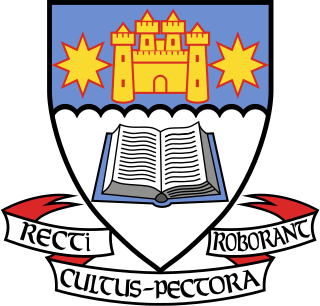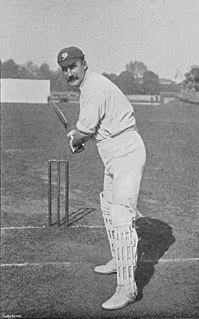Arthur Brown may refer to:

Otago Boys' High School (OBHS) is one of New Zealand's oldest boys' secondary schools, located in Dunedin, Otago, New Zealand. Originally known as Dunedin High School, it was founded on 3 August 1863 and moved to its present site in 1885. The main building was designed by Robert Lawson and is regarded as one of the finest Gothic revival structures in the country. Situated on high ground above central Dunedin it commands excellent views of the city and is a prominent landmark.

Henry Pratt Fairchild was a distinguished American sociologist. He was a sociologist who was actively involved in many of the controversial issues of his time. He wrote about race relations, abortion and contraception, and immigration. He was involved with the founding of Planned Parenthood and served as President to the American Eugenics Society.
Southland Boys' High School (SBHS) is an all-boys school in Invercargill, New Zealand, and has been the only one in the city since Marist Brothers was merged with St Catherines to form Verdon College in 1982.
Waitohi, Waitohi Flat and Upper Waitohi are small farming centres from 5 to 16 km west of Temuka and north of the Opihi river, South Canterbury in New Zealand. They are about 20 km north of Timaru.
Allan David Pearce is a New Zealand football (soccer) player who plays as a striker. In the 2004/05 season he played for Waitakere United, scoring 6 goals.
The following lists events that happened during 1903 in New Zealand.
Chichester House or Carew's House was a building in College Green, Dublin, Ireland, used in the 17th century to house the Parliament of Ireland.

Fenoterol is a β adrenoreceptor agonist. It is classed as sympathomimetic β2 agonist and an inhaled bronchodilator asthma medication.
Mount Galloway is the highest point on Antipodes Island, one of New Zealand's outlying islands. It rises to a height on 366 metres (1,201 ft). It is part of the most recently active volcano in the group, but there is no exact eruption date known. Mount Galloway together with Mount Waterhouse are probably formed during the most recent eruption. They are at least as old as the Holocene era.
J. Blair Fairchild was an American composer and diplomat. Along with Charles Wakefield Cadman, Charles Sanford Skilton, Arthur Nevin, and Arthur Farwell, among others, he is sometimes grouped among the Indianists, although he had only a marginal association with their work.

The Cyclopedia of New Zealand: industrial, descriptive, historical, biographical facts, figures, illustrations was an encyclopaedia published in New Zealand between 1897 and 1908 by the Cyclopedia Company Ltd. Arthur McKee was one of the original directors of the company that published The Cyclopedia, and his business partner H. Gamble worked with him on the first volume. Six volumes were published on the people, places and organisations of provinces of New Zealand. Despite being vanity press and almost wholly restricted to white male European colonists to the exclusion of Māori, women and other minorities, the Cyclopedia is now a key historical resource because of its breadth of coverage. Many small towns and social institutions were covered which were poorly covered by contemporary newspapers. The first volume, which covered Wellington, also included the colonial government, politicians, governors, and public servants. The first volume was produced in Wellington, and the remaining volumes were produced in Christchurch.
Charlie James Pearce was a New Zealand rugby footballer who was part of the professional 1907-1908 New Zealand rugby tour of Great Britain.
The 1909 New Zealand rugby league season was the second season of rugby league that had been played in New Zealand.
The 1912 New Zealand rugby league season was the fifth season of rugby league that had been played in New Zealand.
The 1909 New Zealand rugby league tour of Australia was a tour by the New Zealand national rugby league team. The New Zealand national rugby league team lost to Australia 1-2 in the three match test series.
The 1913 New Zealand rugby league tour of Australia was a tour by the New Zealand national rugby league team.

Lord Hawke selected a cricket team of ten amateurs and two professional players to tour Australia and New Zealand from November 1902 until March 1903. After an opening game in San Francisco, the tour began of eighteen matches - seven of them considered first-class - in New Zealand followed by three further first-class games in Australia. Hawke's team was the first to tour Australasia with New Zealand as the primary destination and, as was the norm at the time, was privately run and funded. The Australian leg of the tour was a "profit making venture", however the games in New Zealand were scheduled at the behest of the New Zealand Cricket Board in order to raise the profile of cricket in the country. Two of them were against a New Zealand cricket team, before its international Test status. The inclusion of such games on the tour were considered "a sign that cricket in New Zealand was starting to be taken more seriously, and a move towards official international status was possible."
Kirsten Pearce is a New Zealand field hockey player who has represented her country.
The New Zealand cricket team toured Australia in February 1899, playing two first-class matches against state teams and two other matches. It was New Zealand's first overseas tour.






